Stunt scooter purchasing advice: how to choose the right product
- The most important facts in brief
- Stunt scooters are suitable for tricks.
- The material determines the durability as well as the weight of the scooter.
- Stunt scooters can be bought ready-made. However, if you want, you can also buy the individual parts and assemble your scooter yourself.
- Beginner models are available for as little as 50 euros.
How do stunt scooters differ from city scooters?
At first glance, stunt scooters look like normal city scooters. Just like these, the rider stands with one leg on the standing surface, the deck, and pushes off the ground with the other. When the desired speed has been reached, the rider stands with both feet on the deck. But that is where the similarities end. “Stunts” in German mean tricks that often include acrobatic components and involve a certain amount of risk. Stunt scooters are therefore not primarily used for locomotion, but for performing more or less dangerous tricks. That is why they are also called “trick scooters”.
Looking at the stunt scooter’s closest relatives, the skateboard and the BMX bike, its relationship to the city scooter becomes clear:
| Means of transport | Recreational sports |
|---|---|
| Trekking bike | BMX bike |
| Longboard | Skateboard |
| City scooters | Stunt scooters |
When the characteristics of a stunt scooter are considered, it becomes clear why, unlike a city scooter, it is mainly used for recreational sports. City scooters, for example, are not suitable for tricks. Anyone who has hopped off the pavement a few times knows that such actions quickly cause the wheels to go out of true or even cause the scooter to break apart. As a means of transport in the city, however, city scooters are comfortable and practical. They are easy to ride and can be folded for transport in the car or on public transport. Depending on the size of the rider, the height of the handlebars can also be adjusted. The stunt scooter is also easy to ride, but it is not foldable. It is also more robust to withstand bumps and falls. For stability reasons, it is not adjustable – the height of the handlebar is fixed. So you have to buy a model that is adjusted to the size of the rider.
Who are stunt scooters suitable for?
Stunt scooters are permitted from the age of eight, there is no upper age limit. However, tricks with stunt scooters require a high level of motor skills, body coordination and a sense of balance. Children under eight who are still too insecure in these areas should approach it slowly, for example by trying out a three-wheeled scooter. Senior citizens are also advised not to do this, because in old age they often lack the reflexes, stability and mobility needed to catch themselves in a fall.
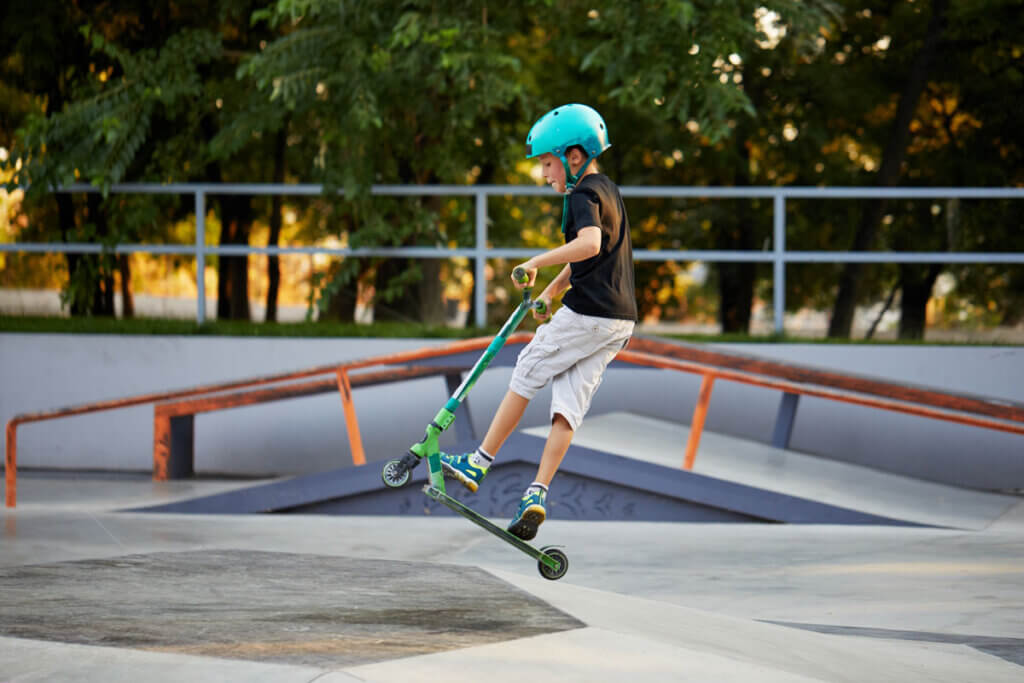
Stunt scooters are well suited for late entrants to the sport of tricks. Compared to similar sports like skateboarding and BMX riding, freestyle scootering is relatively easy and safe to learn. The rider stands upright and has a small distance to the ground. This is also the case with a skateboard, but there he cannot catch himself if he loses his balance. A scooter, on the other hand, allows the rider to hold on to the handlebars at all times. So if you have never dared to skate or BMX, you can dare to go to the skate park and maybe even the glorious half pipe on a scooter with a reduced risk of injury.
It should be noted that scooters have an upper weight limit. This is usually 100 kilograms. There are also models that allow 10 to 20 kilograms more. With even more weight, however, they are too much of a burden. In addition, the handlebars of the scooter should be approximately at the height of the hips. The overall height of the scooter is usually 75 to 85 centimetres, so this is not a problem for most adults. However, very tall people, say over 190 centimetres, will probably not be able to ride on conventional stunt scooters. They should instead look for custom scooters where they might find suitable parts for their height. Small people should not have any difficulties, as there are scooters for small children. Children who are too small even for the smallest scooter can try children’s scooters for the time being.
Which stunt scooters are there?
Although stunt scooters come in different colours and designs, their construction is always similar. However, the scooter scene distinguishes between self-built customs and completes, i.e. prefabricated models.
Stunt Scooter Completes
Completes are ready-built scooters. Their advantage is that the buyer does not need any prior knowledge to use them. After the purchase, they can roll straight out of the shop. Thus, they are ideal for beginners, as they usually do not know well enough to know which parts they need, whether they are compatible with each other and how they are screwed together. Accordingly, they are also safer for beginners because they have been built and tested by professionals. Last but not least, Completes are significantly cheaper than Customs. A stunt scooter can be bought for as little as 50 euros, which is well suited for beginners in recreational sports. The company MGP, for example, has several beginner’s models in its range, which are in the price class from 50 to 120 euros.
Custom Stunt Scooter
Custom scooters can be much higher quality. If you assemble your own scooter, you can choose the best parts and thus build a pro scooter. This means that the quality of custom stunt scooters is usually higher, provided the scooter rider knows his stuff. This is because the workmanship of each individual part can be inspected. Custom scooters also offer the possibility to freely choose aesthetic components such as colour combinations and patterns. However, they are significantly more expensive. They can cost several hundred euros when bought new. Some dealers offer to assemble stunt scooters. This way, buyers who do not want to take care of the assembly themselves can also get their hands on an individually configured stunt scooter. However, this is the most expensive option.
What are the most important purchase criteria?
When buying a stunt scooter, individual preferences play a role in the decision-making process in addition to product quality. Whether buying a Complete or creating a Custom, every rider should know which features are important to them. The choice of wheels, for example, can influence the scooter’s manoeuvrability and speed. It can also be helpful for beginners, who do not yet know which riding style they prefer, to inform themselves in advance. With all purchase criteria, attention should be paid to the general quality of workmanship.
Material
Stunt scooters are made almost entirely of metal. Mainly aluminium and steel are used. Professional scooters are built exclusively from aluminium, as the metal is very light and robust. For professionals, every gram is important. After all, for most tricks the scooter has to be lifted and skilfully handled in the air. Scooters made of pure aluminium are expensive, however.
For beginners who do not want to invest so much money, a scooter made of aluminium and steel is quite sufficient. Beginners would probably hardly notice small differences in weight. It is much more important for them to approach the tricks slowly. In addition, steel scooters are more stable and durable. When they are eventually ready to perform double backflips (backward somersaults), former beginners can buy a higher-quality model made of aluminium to make lifting easier. For everyday use, however, the stability offered by steel cannot be beaten.
Wheels
No other part of the scooter affects the riding experience as much as the wheels. These support the combined weight of the scooter and the rider. An important feature of the wheels is their diameter. As a rule, it is 100 millimetres. However, it can range from 98 to 110 millimetres. In some cases, such as the Chilli Reaper Reloaded, the diameter can even be 120 millimetres.
If you are building a custom scooter or want to replace your old wheels, it is essential to pay attention to the compatibility of the wheels. It is possible that the diameter is too large or too small and therefore does not fit the scooter. A large diameter increases the speed potential of the scooter, while a small diameter makes the scooter more manoeuvrable.
The core of the wheels is either made of aluminium or plastic or nylon. It goes without saying that aluminium wheels are of higher quality and more robust. There are four types of cores:
| Roller core | Properties |
|---|---|
| Solid core | Durable, robust, relatively heavy, expensive |
| Spoked core | Light, less robust |
| Hollow core | Light, robust, not as robust as the solid core |
| Plastic core | Light, cheap, not very strong |
Another relevant feature is the degree of hardness of the rollers. This is measured using the “durometer scale”. For softer materials, the A scale is used. 0A is the softest degree of hardness and 100A the hardest. The wheels of stunt scooters usually have a hardness of 85A. Harder wheels are faster and last longer. Soft wheels have more grip and reduce vibrations.
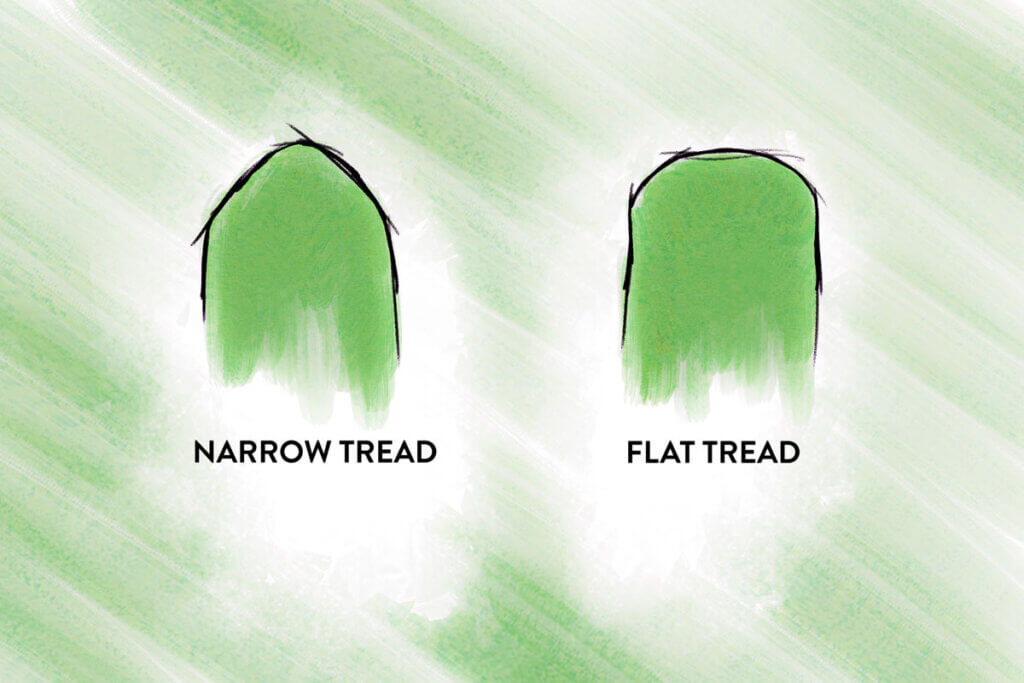
Last but not least, the width of the tread plays an important role. By “tread” we mean the side view of the roller, not corrugations in the surface like on car tyres or shoes. A flat profile has a larger contact area. This means that the roller resistance is greater and the scooter is therefore slower. On the other hand, a flat tread provides good grip. A narrow profile, on the other hand, has less rolling resistance and is therefore faster. Which tread you want to choose depends on your riding style and the scooter’s area of use. People who use it mainly in indoor skate parks have different requirements than people who ride the scooter to work or school.
Ball bearings
Ball bearings facilitate the rotation of the wheels on the axle. There are two of these in each wheel, located in the wheel hub and separated by a spacer. The ball bearings mainly influence the speed and feel of the wheel. An important tip when using stunt scooters is to avoid the ingress of water, sand or dirt to prevent excessive wear on the ball bearings. How well a ball bearing is protected from foreign objects depends on its construction: Sealed ball bearings prevent the penetration of any substances due to their closed design. This makes them ideal for outdoor riding. Open ball bearings are more suitable for skate halls. They are faster, but need to be cleaned more often. Since they are open and the skate hall causes much less dirt than the outdoors, they can be cleaned quickly and easily. High-precision ball bearings have the best performance. Although they are the fastest, they need to be cleaned regularly, otherwise the high-precision bearings will wear out quickly.
The most important quality features of ball bearings are the material, manufacturing precision and lubrication: Most ball bearings are made of steel. It is advisable to use ball bearings with a high-quality steel alloy, as cheap variants wear out too quickly. In addition to steel ball bearings, there are also ball bearings made of ceramic. Ceramic balls are very hard and do not rust. They therefore retain their shape for longer.
Another important feature of ball bearings is their manufacturing precision. This refers to the accuracy of fit of the individual components. The higher the manufacturing precision, the easier it is to ride. The precision is classified according to the ABEC standard – from the English “Annular Bearing Engineering Committee”. A high ABEC value indicates a high manufacturing precision. Coxwain scooters, for example, often have an ABEC value of nine, which means a high degree of precision. However, precision does not refer to speed or durability. The material and lubrication are more decisive factors in this respect. In addition, precision is reduced by use.
Last but not least, lubrication is important for ball bearings. Be it with oil or grease, all ball bearings need to be relubricated in the course of their use. The absence of lubricant leads to heating and loss of speed. If you are looking for performance, you should use lubricating oil. Oil has a low viscosity and ensures low resistance. Thus, it enables high speed, but relubrication must be more frequent. Grease is easier to maintain in this respect. It does not wear out as quickly and protects better against water and dirt. On the other hand, it provides more resistance, so the ball bearing turns more heavily.
Water damages the ball bearing
Regardless of which lubricant is used, the following applies: If water gets inside the ball bearing, it will wear out quickly. After contact with water, the ball bearing should therefore be immediately and carefully cleaned, dried and relubricated.
Should I buy a used stunt scooter?
The safest way is always to buy new. This way, the buyer can be sure that the different parts of the scooter are not worn out. In addition, it is easier to inspect the workmanship when the scooter is new. Nevertheless, those who buy a used scooter should examine its general condition: A stunt scooter with many scratches and dents is evidence of careless handling. However, since stunt scooters are used for tricks, this cannot be completely avoided. The ball bearing and the rollers should be examined in particular detail for signs of wear, as they are crucial for the riding experience and certain damage may not be noticeable at first glance. In addition, the grip tape should still be rough to ensure good grip on the standing surface. If you decide to buy a used scooter, you should definitely test drive it. If the seller allows it, it is even recommended to take the scooter apart to inspect the wheels and the ball bearing more closely.
The different parts of the stunt scooter
The components that make up stunt scooters are the same apart from price or manufacturer. They may be made of different material or coloured and patterned differently, but all stunt scooters are made of the same components. This does not mean that they all match each other. When creating a custom scooter, attention must be paid to dimensions and compatibility. English terms are usually used to name the parts.
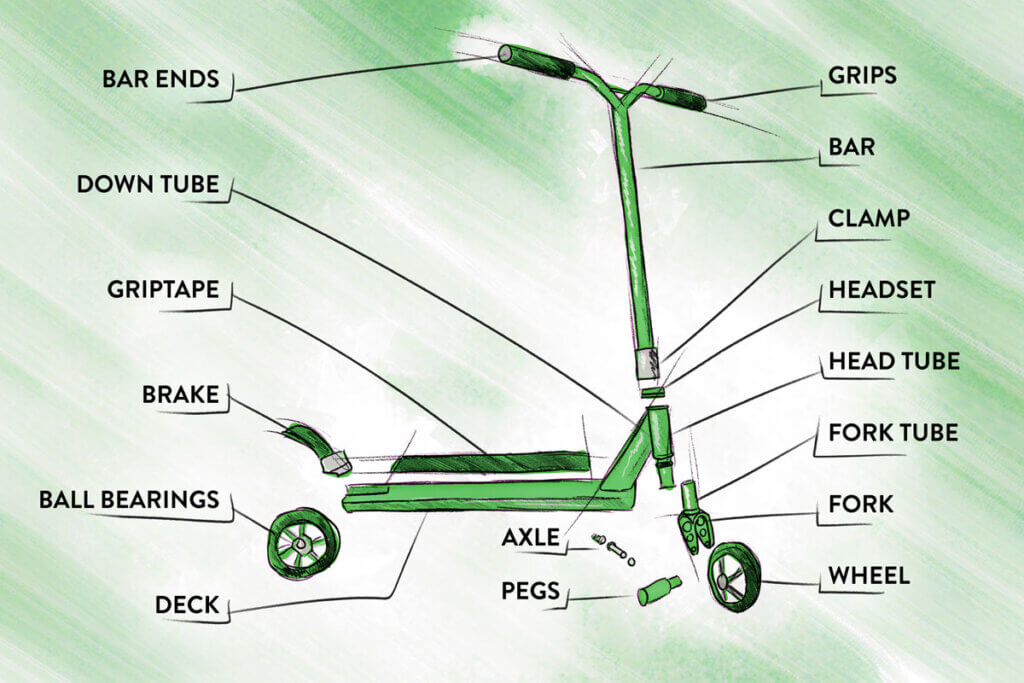
Bar (Handlebar)
The bar is the part of the trick scooter that the rider holds on to and steers the stunt scooter. Bars made of steel are cheap and robust, but heavy. Bars made of aluminium are light and sturdy, but cost a lot more. If you build a custom stunt scooter, you should pay attention to the diameter of the bar. It has to fit on the fork. In addition to straight bars, there are also bars with a slight inward curve, the so-called “back sweep”. The handlebar height must also be suitable for the user.
Grips
Grips are mounted on the bar ends. This is where the rider places their hands when gripping the bar. They are usually made of rubber or foam and can be hard or soft. There is no optimal combination. The rider can therefore decide what is most comfortable for him.
Fork
The fork of the stunt scooter connects the bar to the wheels. However, it must also be compatible with other parts such as the headset and the compression system. Especially for this part of the scooter, a lot of knowledge is required for custom building. Forks can be divided into threaded and threadless forks. Forks made of aluminium can be one-piece or two-piece. One-piece forks are light and cheap. Two-piece forks are light and strong. Forks that are welded from chrome or steel are robust and cheap, but they are much heavier.
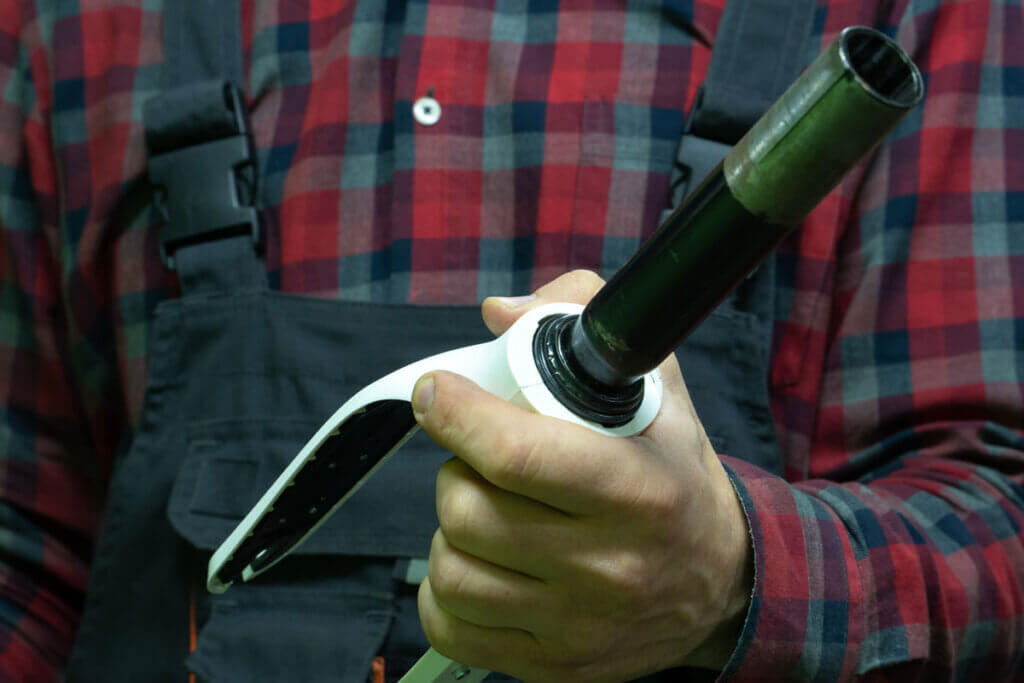
Compression System (Compression System)
The compression system is similar in appearance to a screw. It serves the purpose of fixing the bar, the fork and the deck so that the wobbling of the handlebar is minimised. The most popular systems are the ICS system, the HIC system, the ICH system and the SCS system. The fork and the handlebar decide which compression system is suitable.
Clamp
Clamps are used to connect the bar to the fork. Depending on the diameter of the bar, the clamp has a diameter between 32.0 and 34.9 millimetres. Clamps also differ in the number of clamping screws. Anaquda’s Cobra series, for example, has a double clamp, while the more expensive V7 Park series has four clamping screws. Here, however, compatibility with the bar is again required. It is best to pay attention to the manufacturer’s specifications.
Headset
Headsets allow the fork and bar to rotate freely. There are headsets with and without thread (“threaded” and “threadless”). For headsets with thread, the fork must also have a thread. Threadless headsets require forks without threads. Threadless headsets are also divided into “integrated” and “non-integrated”. No tools are required to fit integrated headsets. Non-integrated headsets, on the other hand, have to be fitted by hand.
Wheels
Wheels have two ball bearings and a spacer, and rotate around an axis. They are distinguished by their core type, material, size, hardness and profile, among other things. Wheels are one of the most important parts of the stunt scooter and have a strong influence on the riding experience.
Axle
The axle attaches the wheel to the fork. Axles are made of either sturdy steel or light aluminium. The axle diameter is usually eight millimetres, but can be larger or smaller depending on the manufacturer. The axle of the front rollers must fit the fork, whereas the axle of the rear roller must be compatible with the deck.
Deck (footboard)
The deck is the footboard of the stunt scooter. Decks are usually made of aluminium. Their most important feature is their weight. Heavy decks are more robust, light decks are more suitable for tricks. The tread has to bear the entire weight of the user. This is a big load, especially for jumps, because scooters have no spring mechanism. Since steel is more elastic and can withstand greater loads, a steel tread may be more suitable for heavy users.
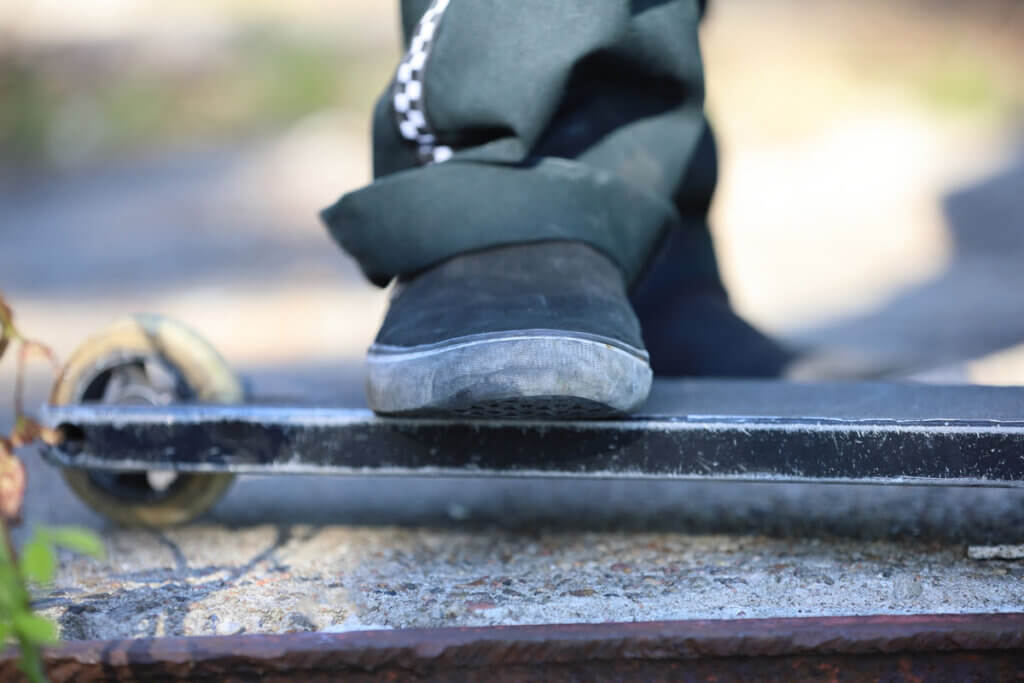
Griptape
The Griptape is glued to the deck. It has a rough surface that provides optimal grip. When it is worn, the griptape must be replaced. Water and dirt accelerate wear.
Brake
Stunt scooter brakes are made of metal and are fixed to the deck. They are operated with the foot and serve to regulate speed, but not to brake completely. Brakes are divided into spring brakes and flexfender brakes. Spring brakes are attached horizontally to the deck by a pin. After application, the brake returns to its original position thanks to the spring. Flexfender brakes are mounted vertically on the deck with a screw. When braking, the metal plate is pressed onto the roller. Due to the elasticity of the steel, the brake automatically returns to its original position. This variant is cheaper and more popular. An example of flexfender brakes is HUDORA’s stunt scooter XQ series.
Peg
Pegs are extensions of the axle. These must be purchased separately and mounted on one side of the castors. Pegs are made of steel or aluminium. The former are more robust, the latter lighter. Pegs are needed to perform certain tricks, such as grinds, where the rider uses the pegs to jump onto a long edge or pipe and slide along it.
To better understand how a scooter is assembled, you can watch the following video from stuntscooteronline:
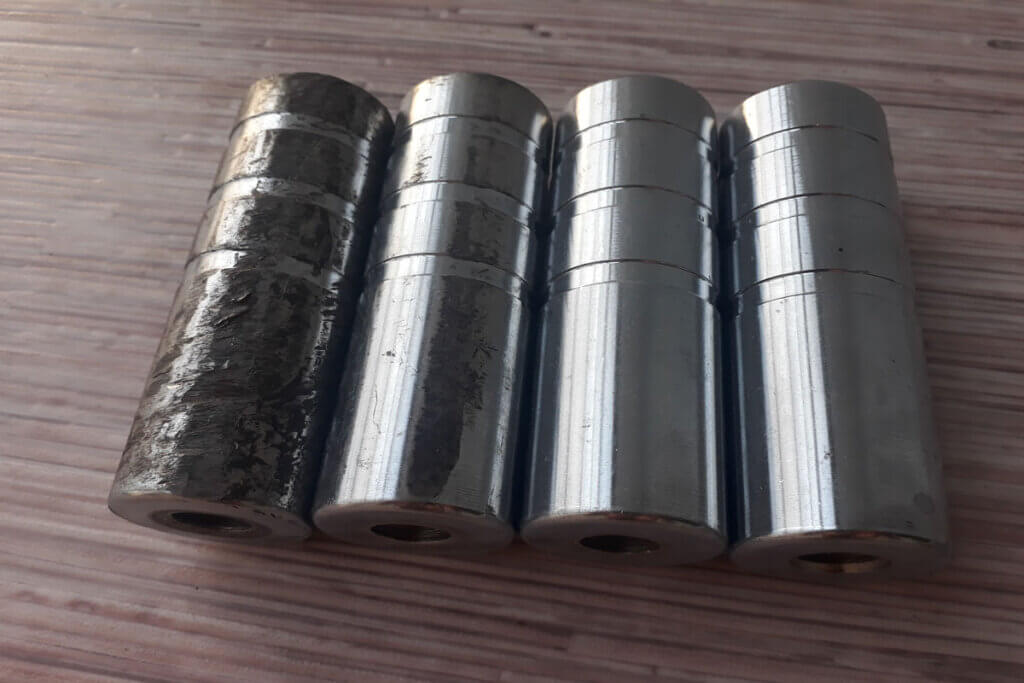
What should be considered when maintaining stunt scooters?
Compared to other sports equipment, stunt scooters are relatively easy to maintain. However, there are a few points to pay attention to: For example, you need to replace the grips and the grip tape after some time, as they wear out over time. In addition, the ball bearings should be relubricated with oil or grease from time to time. To avoid wear of the ball bearing, we advise you to avoid water, sand and moisture. Last but not least, you must check the screws and connections regularly. After all, the stunt scooter is subjected to a lot of pressure when performing tricks. So the rider should make sure that all the screws are tight and that there are no breaks in the connections.
Safety instructions
There is no way to guarantee the safety of stunt scooter riders. Performing tricks always involves a certain amount of risk. However, there are accessories that can help prevent serious injuries. For example, a helmet can protect the head from impacts. Knee and elbow pads provide a softer fall. Gloves provide a better grip, which reduces the risk of slipping off the scooter.
What should I pay attention to when riding a stunt scooter?
The scooter is used like a city scooter: The rider stands with one leg on the tread and pushes off the ground with the other. When the desired speed has been reached, he also stands on the deck with the second leg. It should be noted that the brake is only used for deceleration. Full braking is usually not possible with it. If you have to brake abruptly, you should let one foot drag along the ground or jump off completely. Road traffic regulations treat stunt scooters like skateboards or pedestrians. They may therefore be ridden neither on the road nor on the cycle path, but only on the pavement. However, stunt scooters are primarily designed for the skate park, where their full potential can be exploited. It is important to ride stunt scooters only on smooth surfaces. They are not suitable for cobblestones, for example.
Tricks for the stunt scooter
Different tricks are possible with skateboards, BMX bikes and stunt scooters. However, there are many overlaps between BMX and stunt scooters. For example, tricks like bunny hops, grinds, tailwhips and backflips are among the most popular tricks for different levels. The stunt scooter variations are usually a bit easier. This is most obvious with jumps, which are much easier with scooters than with BMX bikes. Nevertheless, beginners should gain a little experience before they dare to go into the halfpipe. ZDFtivi teaches you how to do a tailwhip step by step in a YouTube video.

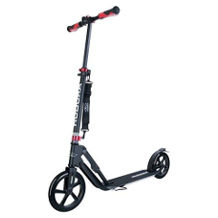
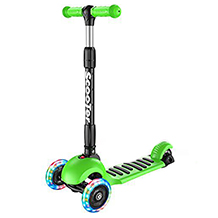
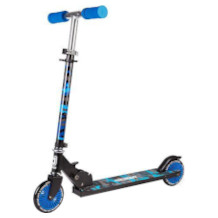
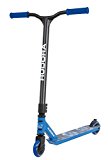
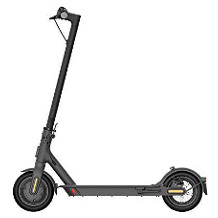
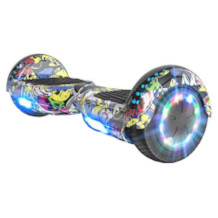
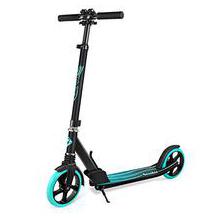
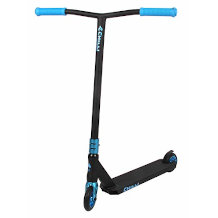
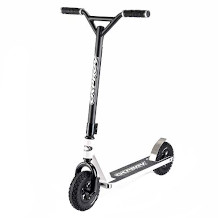
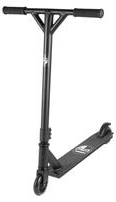

 196 reviews
196 reviews